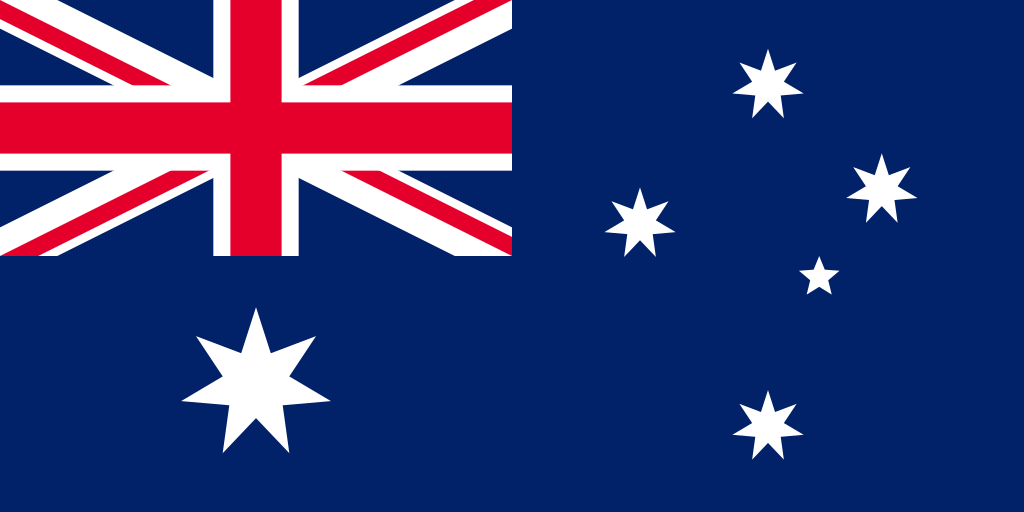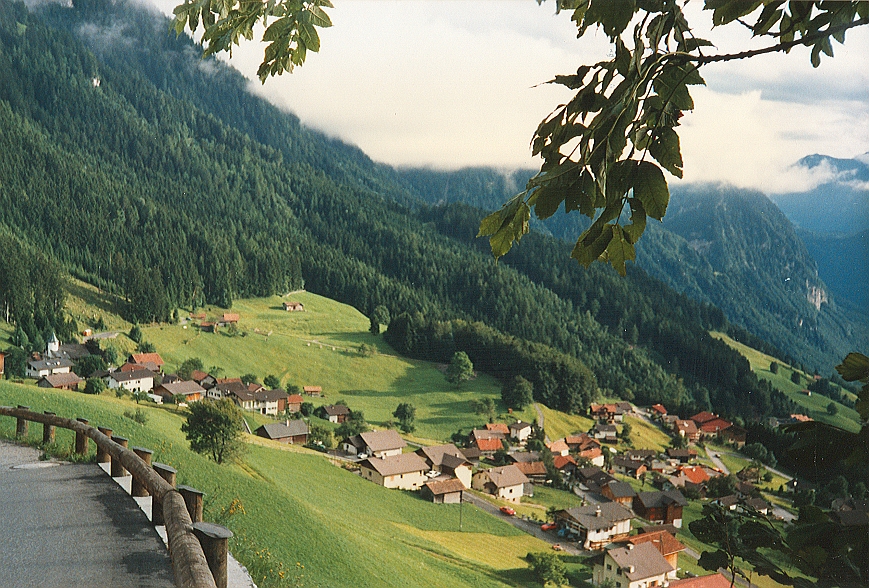Triesenberg, Liechtenstein: 25 January 2016
There is an 11-hour time zone difference between Vaduz, the capital of Liechtenstein, and Canberra, the capital of Australia.

So while I was discovering the secrets of this land of the Walser in southern Liechtenstein, Australians were already starting up their barbies for cut lunch and snag while drinking stubbies of beer to commemorate the national celebration of Australia Day.
So it is rather fitting that I discover an Australian connection to a former resident of this Liechtenstein municipality.

Cheviot Beach, a beach near Point Nepean in the state of Victoria, Australia.
It was named after the SS Cheviot, an English coal and passenger steamer, which broke up and sank nearby with the loss of 35 lives on 20 October 1887.
(Wikipedia)
On clear days the lookout at the top of Cheviot Hill offers the full panorama of Port Phillip Bay.
The 2.7 kilometre gap between Point Nepean and Point Lonsdale is an awesome sight.
The Rip, as it is known, is one of the most perilous passages to a harbour in the world.
Half the entrance is unnavigable due to underwater reefs and when the tide rises in Bass Strait it cannot cope with the volume of water surging forward.
When the flood tide is rushing into the heads, the sea level in the Strait is more than a metre higher than in the Bay and vice versa when the tide is going out.
Cheviot Bay is well suited to snorkeling.
Its cliffs have receded over thousands of years, leaving a shelf of limestone rock where the Cheviot came to grief.
If you were allowed on Cheviot Beach, you could wade out to a point where the water suddenly becomes very deep.
Looking down, you can tell it by the churning waves.
The public has been locked out of Point Nepean since the quarantine station was established there in 1852.
Access became even more restricted when a series of defence fortifications were built there in the 1880s, then expanded and upgraded for the First and Second World Wars.
It is still not possible for the general public to go down to Cheviot Beach, even though Point Nepean became a national park in 1988.
Access is difficult as the lower part of the only path has collapsed.
In addition the seas are considered too dangerous.
The only way to see the beach is to do the Cheviot Hill Discovery Walk, one of four self-guided walks at Point Nepean.
The path is sealed but is steep in places with a few steps near the top.
It passes through tough tea-tree scrub punctuated with signs warning walkers to stay on the track and not to climb the gun emplacement structures dating from World War II.
This area was used for target practice for many years and still contains unexploded shells.
Interpretation boards along the way explain the vegetation and the Aboriginal and military history associated with the peninsula.
After about 20 minutes, the path emerges from the scrub to a clearing on the top of Cheviot Hill.
Directly below, at the bottom of a sheer cliff, is the long golden stretch of sand and the pounding waves of the beach.
“Australia is a difficult country to keep track of.
On my first visit, some years ago, I passed the time on the long flight from London reading a history of Australian politics in the 20th century, wherein I encountered the startling fact that in 1967 Australian Prime Minister Harold Holt was strolling along the beach, plunged into the surf and vanished.
No trace of the poor man was ever seen again.
This seemed doubly astonishing to me – first that Australia could just lose a Prime Minister and second that news of this had never reached me.”
(Bill Bryson, Down Under)

To be fair to Bill, Australia is not unique for having people go amiss.
The list of famous people whose whereabouts remain a mystery is a distinguished one.
Among the many who have vanished without a trace are: the rebel slave Spartacus, Julius Caesar and Cleopatra´s son Caesarion, Roman Emperor Valens, Owain Glyndwr (last Welsh person to hold the title Prince of Wales), Giovanni Caboto (in English, John Cabot, the Italian discoverer of Canada), the Roanoke colonists of Virginia, John Franklin´s expedition looking for the Northwest Passage, Solomon Northup (US author of Twelve Years a Slave), Joshua Slocum (first man to sail alone around the world), Ambrose Bierce (US author of The Devil´s Dictionary), Roald Amundsen (first man to reach the South Pole), Amelia Earhart (first woman to try a circumnavigational flight around the world), Glenn Miller (popular US jazz musician and bandleader), Antoine de Saint-Exupéry (French author of The Little Prince), D.B. Cooper (US bank robber), Jimmy Hoffa (US trade union leader)…
And these are just some famous folks.
Of course, still fresh and unforgotten, we all still recall the disappearance on 8 March 2014 of Malaysia Airlines Flight 370, with 227 passengers and 12 crew who still remain unaccounted for.
“It was at Cheviot Beach that Harold Holt went for the Swim That Needs No Towel.
On the day Prime Minister Harold Holt waded into the surf, the weather was windy but fine.
Above: Harold Edward Holt, 5 August 1908 – 17 December 1967, 17th Prime Minister of Australia
Things were not going very well for him as Prime Minister – his skills lay more in kissing babies and making the ladies tingle (he was evidently a bit of a hottie) than in running affairs of state – and we may safely assume that he was glad to be out of Canberra for the long Christmas break.
Holt and his wife, Zara, built a beach house at Portsea in 1957.
For Holt, swimming and snorkelling were a wonderful antidote to the pressures of high office.
Holt came to Cheviot Beach because he had a weekend home at nearby Portsea and the army let him stroll on its grounds for the sake of his privacy.”
(Bill Bryson, Down Under)
Holt had taken up snorkelling in 1954 and loved it.
“As soon as I put my head under water, I was hooked,” he said.”
So there were no lifeguards, no members of the public or even security guards in attendance when, on 17 December 1967, Holt went for a breezy stroll with some friends among the rocks and pounding waves just below.
Also on the beach was Holt’s lover of the time, Marjorie Gillespie.
Although the sea was lively and the tide dangerously high…
Although Holt had almost drowned there six months earlier while snorkelling with some chums…
Holt decided to go for a swim.
Before anyone could react Holt had whipped off his shirt and plunged into the surf.
He swam straight out from the Beach a couple of hundred feet and almost instantly vanished, without fuss or commotion or even a languorous wave.
Fearing the worst, his friends raised the alert.
Within a short time, the beach and the water off shore were being searched by a large contingent of police, Royal Australian Navy divers, Royal Australian Air Force helicopters, Army personnel from nearby Point Nepean and local volunteers.
This quickly escalated into one of the largest search operations in Australian history, but no trace of Holt could be found.
Enter Hans Hass.
Hans Hass (23 January 1919 – 16 June 2013) was an Austrian biologist and diving pioneer.
Born in Vienna, Hass was known for being the first scientist to popularise coral reefs, stingrays and sharks.
He pioneered the making of documentaries filmed underwater.
He led the development of the aqualung and a type of re-breather.
He was known, too, for his energon theory (the idea that the behaviours of all life-forms — human, nonhuman animal and plant — have common origins) and his commitment to protecting the environment.
Hass was a remarkable person.
Hass developed the first robot cameras, the first underwater colour photographs and film, the process of research diving, patented radio signal fishing, an underwater watch, swim fins, underwater habitation, a submersible, as well as a decompression computer.
Hass produced four movies, 70 TV films, 105 commercial films and more than 25 books.
He received medals and honours galore, including an Oscar for his extraordinary underwater photography in the movie Xarifa Expedition (1959).
A cone snail, found in the Philippines, was named after him (Protoconus hanshassi) (2012).
Hass acknowledged a rivalry with the better-known French scientist Jacques Cousteau.
According to the New York Times obituary, Hass told historian Tim Ecott that:
“For Cousteau there exists only Cousteau.
He never acknowledged others or corrected the impression that he wasn’t the first in diving or underwater photography.”
Hass lived in Triesenberg from 1960 to 2006, which is a rather odd choice of living location for a man in love with the sea.

Following the disappearance of the Australian Prime Minister, Hass explored the area where Holt had disappeared.
In an interview with Harry Martin for the Australian Broadcasting Corporation’s current affairs programme A.M., Hass said that having observed the underwater conditions of the area with its sharp and jagged rocks he was convinced that Holt had been trapped in the structure of one of these rocks and his body considerably torn by the nature of the forces of the sea and the sharp rocks.
“I got chatting with the park ranger:
“The thing you´ve got to remember is that the only thing unusual about the Harold Holt drowning was that he was Prime Minister when it happened.
If it hadn´t been for that the whole thing would have been completely forgotten.
Mind you, it´s pretty well forgotten anyway…
Most people barely remember it.
A lot of people under 30 have never even heard of it…
They built a memorial to him in Melbourne.
Know what it was?
A municipal swimming pool.””
Melbourne’s Harold Holt Swim Centre
(Bill Bryson, Down Under)
Holt was 59 years old and had been Prime Minister for not quite two years.
A memorial to Holt has been attached to the limestone reef beneath the waters of Cheviot Bay, not far from the remains of the ship he loved to explore.
The last 48 years have seen a succession of conspiracy theories unveiled to explain Holt´s disappearance.
- He was abducted and taken on board a Chinese submarine.
- Holt was a spy who defected to the Chinese, swimming out to the submarine that took him away.
- The CIA bumped Holt off for planning to withdraw Australian troops from Vietnam.
- Holt swam out to meet a speedboat, which promptly took him to Europe to be with a French lover.
- Shark attack
- He was abducted by aliens / mermaids / the KGB.
- He was lured away to join the circus.
(Adam Ward, Everything You Didn´t Need to Know About Australia)
Hass left Triesenberg and moved back to Vienna, where he died on 16 June 2013.
Maybe Hass´ international exposure and his visit to Australia might be the reason why Vienna souvenir shops sell postcards and T-shirts with the words:


